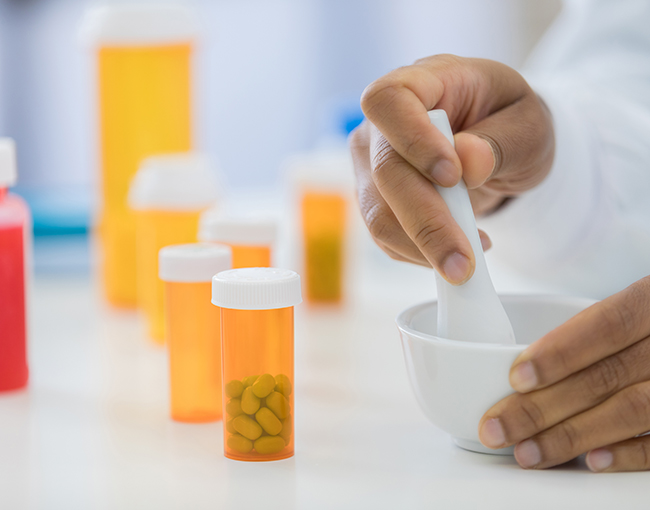In the realm of antimicrobial therapy, pharmaceutical Methylene Blue emerges as a fascinating and promising participant. Beyond its vibrant blue hue, this versatile compound has been gaining attention for its potential in combating infections and various medical functions. As we delve into the mechanism behind Methylene Blue's antimicrobial prowess, we uncover a captivating world of scientific discoveries and potentialities.
Unveiling the Basics: What is Pharmaceutical Methylene Blue?
Before exploring its antimicrobial properties, let's familiarize ourselves with Methylene Blue. Originally identified for its use as a dye in textiles and staining biological samples, this compound has discovered its method into the realm of drugs. It is now an integral part in various pharmaceutical preparations, displaying efficacy in numerous medical situations.
An Antimicrobial Powerhouse: The Mechanism of Action
Methylene Blue's outstanding antimicrobial efficiency lies in its distinctive mechanism of motion. When launched right into a biological system, it exhibits broad-spectrum exercise in opposition to a wide range of pathogens, together with bacteria, fungi, and even some viruses. Understanding how this compound works supplies valuable insights into its therapeutic potential.
1. Disruption of Pathogen's Cellular Respiration: Methylene Blue's first line of assault is directed on the pathogen's cellular respiration course of. By interfering with the electron transport chain within the microorganism's mitochondria, it disrupts their power manufacturing, finally leading to the collapse of vital cellular capabilities.
2. Reactive Oxygen Species Generation: Within the pathogen, Methylene Blue catalyzes the manufacturing of reactive oxygen species (ROS). These highly reactive molecules induce oxidative stress, causing harm to the pathogen's DNA, proteins, and lipids, rendering it unable to proliferate effectively.
3. Inhibition of Biofilm Formation: Methylene Blue exhibits the power to inhibit biofilm formation—a protecting barrier that pathogens construct to evade the immune system and antimicrobial agents. By disrupting https://www.google.com.au/maps/place/My+Compounding+Pharmacy/@-33.9315247,151.0726162,15z/data=!4m6!3m5!1s0x6b12bb90df31c4ef:0xace3d0a7f8cf1b97!8m2!3d-33.9315247!4d151.0726162!16s%2Fg%2F11f7kmlz15?entry=ttu , Methylene Blue enhances the vulnerability of these pathogens to different therapeutic interventions.
four. Potential Synergy with Antibiotics: In some circumstances, Methylene Blue has demonstrated a synergistic impact when mixed with traditional antibiotics. This mixture enhances the antibiotic's effectiveness, potentially lowering the event of antibiotic resistance in pathogens.
Applications in Antimicrobial Therapy
The multi-faceted mechanism of Methylene Blue opens doors to numerous applications in antimicrobial therapy and past.
1. Treating Infectious Diseases: From bacterial infections like methicillin-resistant Staphylococcus aureus (MRSA) to fungal infections, Methylene Blue exhibits promise as an adjunct therapy within the therapy of challenging and drug-resistant infections.
2. Antiviral Potential: While its antiviral properties are still underneath investigation, Methylene Blue has displayed inhibitory effects against certain viruses, making it a topic of curiosity in antiviral research.
three. Combatting Biofilm-Associated Infections: Biofilms contribute to persistent and recurrent infections, complicating treatment efforts. Methylene Blue's capability to disrupt biofilms might offer a new strategy to combating such infections.
four. Neurodegenerative Disorders: Beyond its antimicrobial properties, Methylene Blue is being studied for its potential in neurodegenerative problems, corresponding to Alzheimer's illness and Parkinson's disease, because of its neuroprotective effects.
Considerations and Future Prospects

While pharmaceutical Methylene Blue holds tremendous potential, additional research is important to unlock its full therapeutic capabilities. Safety profiles, optimum dosages, and potential interactions with different medications warrant cautious evaluation.
The mechanism of pharmaceutical Methylene Blue in antimicrobial remedy is an interesting journey into the world of medicinal breakthroughs. As researchers continue to unravel its intricacies, this vibrant blue compound might prove to be a priceless ally within the struggle in opposition to infectious ailments and different medical challenges. With every scientific revelation, the promise of Methylene Blue as a game-changing antimicrobial agent shines brighter, offering hope for a healthier future..
